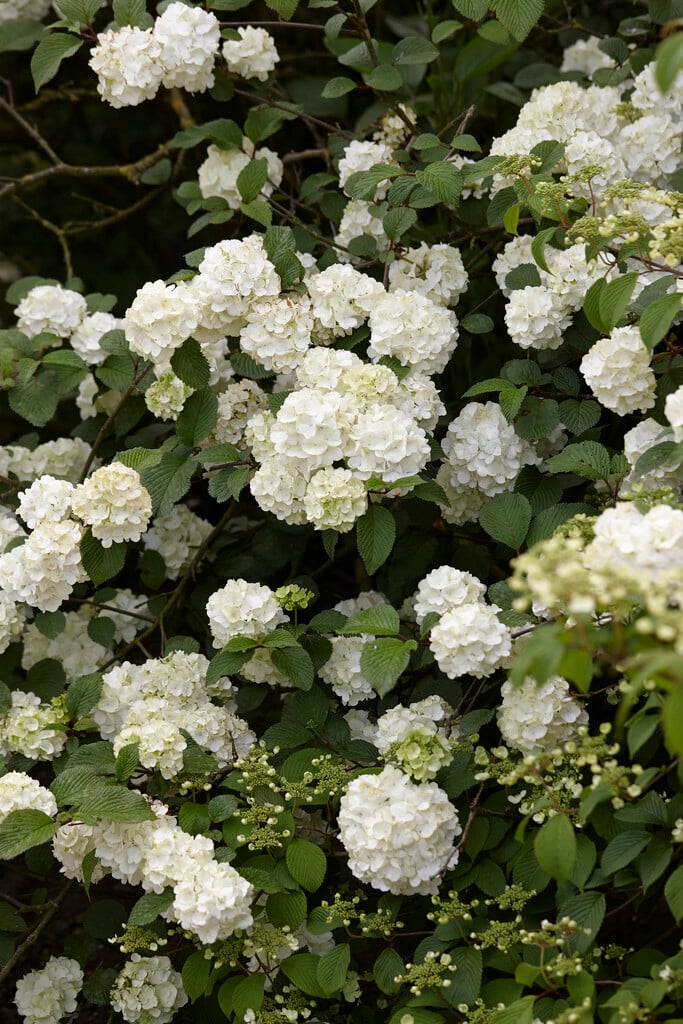Viburnum cassinoides
Appalachian tea tree
A deciduous shrub, to around 2m high, with an upright then rounded habit, and elliptic to oval-shaped dark green leaves that are flushed bronze when young, and turn shades of orange and red in autumn. Dome-shaped clusters of creamy white flowers are produced in late spring, followed by green berries that turn from pink to red to blue to black in autumn, sometimes with two or more colours displaying in the same cluster
Size
Ultimate height
1.5–2.5 metresTime to ultimate height
5–10 yearsUltimate spread
1.5–2.5 metresGrowing conditions
Moisture
Moist but well–drained, Poorly–drained, Well–drainedpH
Acid, Alkaline, NeutralColour & scent
| Stem | Flower | Foliage | Fruit | |
| Spring | Cream White | Green Bronze | ||
|---|---|---|---|---|
| Summer | Green | |||
| Autumn | Green Orange Red | Pink Red Blue Black | ||
| Winter | Black |
Position
- Full sun
- Partial shade
Aspect
East–facing or South–facing or West–facing
Exposure
Exposed or Sheltered Hardiness
H7Botanical details
- Family
- Viburnaceae
- Native to GB / Ireland
- No
- Foliage
- Deciduous
- Habit
- Bushy
- Potentially harmful
- Fruit are ornamental - not to be eaten. Wear gloves and other protective equipment when handling. Pets: Fruit are ornamental, not to be eaten - see the HTA guide to potentially harmful plants for further information and useful contact numbers
- Genus
Viburnum can be deciduous or evergreen shrubs with opposite, simple or palmately lobed leaves and clusters of small, often fragrant white or pink flowers, followed by red, blue or black berries
- Name status
Correct
- Plant range
- Eastern N America
How to grow
Cultivation
Grows well in most moderately fertile, humus-rich soils in full sun or part shade. Tolerates some waterlogging, but dislikes shallow soil over chalk. Plant in groups to ensure the best display of berries
Propagation
Propagate by softwood cuttings in summer
Suggested planting locations and garden types
- City and courtyard gardens
- Cottage and informal garden
- Low Maintenance
- Flower borders and beds
Pruning
Pests
May be susceptible to aphids and viburnum beetle
Diseases
May be susceptible to Phytophthora, honey fungus, grey moulds and leaf spot
Love gardening
Sign up to receive regular gardening tips, inspiration, offers and more
View our Privacy Policy
Get involved
The Royal Horticultural Society is the UK’s leading gardening charity. We aim to enrich everyone’s life through plants, and make the UK a greener and more beautiful place.

